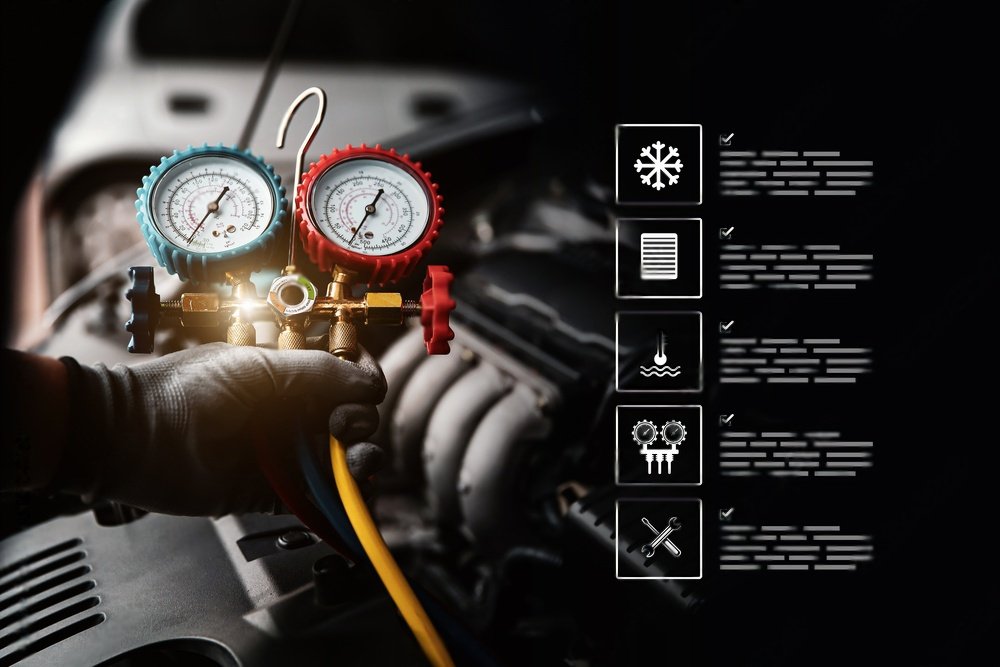Kompressor Reparation og Udskiftning
Introduction
The compressor is a vital component of your vehicle’s air conditioning (AC) system, responsible for pressurizing and circulating refrigerant to cool the cabin air. Over time, the compressor may experience wear and tear or develop faults, leading to reduced cooling performance or complete AC system failure. Compressor repair and replacement are essential maintenance tasks that help restore your vehicle’s cooling system and ensure a comfortable driving experience, especially during hot weather.
Why Compressor Repair and Replacement Matters?
The compressor plays a central role in the operation of your vehicle’s AC system. A malfunctioning compressor can result in insufficient cooling, strange noises, or complete AC system failure. Addressing compressor issues promptly through repair or replacement is essential to restore the functionality of the AC system and maintain comfortable cabin temperatures for you and your passengers.

Restores Cooling Performance
Repairing or replacing a faulty compressor restores the cooling performance of your vehicle’s AC system, ensuring that you can stay comfortable during hot weather conditions.
Prevents Further Damage
Ignoring compressor issues can lead to further damage to other AC components, such as the condenser or evaporator. Prompt repair or replacement of the compressor helps prevent costly repairs down the line.

Steps Involved in Compressor Repair and Replacement
Repairing or replacing a faulty compressor requires specialized knowledge and tools. Below are the main steps involved:
1. Diagnose the Issue
Before proceeding with repair or replacement, diagnose the problem to determine whether the compressor is indeed the cause of the AC system malfunction. This may involve checking refrigerant levels, inspecting compressor belts, and performing a visual inspection of the compressor for leaks or damage.
2. Recover Refrigerant
If the compressor needs replacement, the refrigerant must be safely recovered from the AC system using a recovery machine. This ensures that the refrigerant is properly disposed of and does not harm the environment.

3. Remove Old Compressor
Disconnect the electrical connectors and refrigerant lines from the old compressor. Remove any mounting bolts securing the compressor to the engine or chassis, then carefully lift out the old compressor from its mounting location.
4. Install New Compressor
Carefully position the new compressor in place and secure it with mounting bolts. Reconnect the electrical connectors and refrigerant lines, ensuring proper alignment and tightness.
5. Vacuum and Recharge AC System
After installing the new compressor, vacuum the AC system to remove any moisture or air bubbles. Once the system is evacuated, recharge it with the appropriate amount of refrigerant according to the manufacturer’s specifications.
Benefits of Compressor Repair and Replacement
Repairing or replacing a faulty compressor offers several benefits, including:
Restored Cooling Performance
A properly functioning compressor ensures efficient cooling performance, allowing you to stay comfortable during hot weather conditions.
Increased Longevity
Repairing or replacing a faulty compressor helps prolong the lifespan of your vehicle’s AC system, reducing the likelihood of future breakdowns or malfunctions.
Enhanced Comfort
A functioning AC system provides a comfortable driving experience by maintaining optimal cabin temperatures and humidity levels.
Improved Resale Value
A well-maintained AC system, including a properly functioning compressor, can enhance the resale value of your vehicle.
Conclusion
Compressor repair and replacement are essential maintenance tasks that help restore your vehicle’s cooling system and ensure a comfortable driving experience, especially during hot weather. By addressing compressor issues promptly and with the help of a qualified mechanic or automotive technician, you can enjoy reliable cooling performance and comfortable cabin temperatures in your vehicle.


